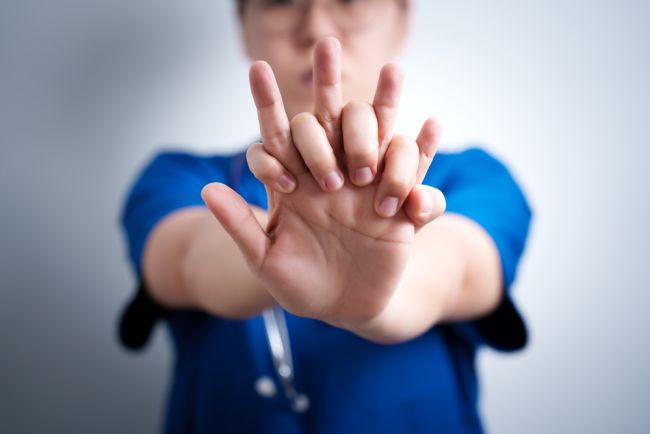
Saving Lives with Quality CPR
With the best of intentions, our industry has not been able to change the persistent statistics of serious injuries and fatalities over the past decade. Even the most brilliant ideas seem to be unable to be translated into a change in work. So, while we continue trying to determine how to slow our serious injury and death rates, we should also gain a better understanding of how to prepare for and respond to serious events when they inevitably occur within our circle of co-workers, family and friends.
In addition to being a lineman, I also have experience as a flight paramedic/nurse, plus wilderness medical training. My experience suggests that we should always be ready to respond to a serious event when it happens. For instance, if you’re reading this, you likely have CPR training. However, there is a high likelihood that you have never performed CPR on a real human being. On the day that an incident occurs – perhaps one that requires you to provide CPR – you may realize there are things you already should have known before that day arrived. Our first dry run at providing CPR shouldn’t be when we are trying to save our co-worker, friend or family member. At the very least, we should think about and mentally rehearse for such an event in advance.
Recently, a couple of linemen asked me these two questions about automated external defibrillators (AEDs), which are medical devices that can help people experiencing cardiac arrest:
- How does an AED start your heart?
- What if the AED states that no shock is advised?
To answer those questions, you should first know that most of us have a pacemaker site in our heart that generates electrical rhythm. Some of us have irregular heartbeats that begin somewhere else in the heart. Regardless of where your rhythm originates, every heartbeat requires energy, which is derived from breathing and the food you eat.
When someone’s heart has stopped beating, we perform artificial heartbeats as part of CPR. When done correctly and well, CPR produces energy from cellular respiration (note: the energy created by our body is called adenosine triphosphate, or ATP). That’s why, for a witnessed cardiac arrest, we need to do two minutes of uninterrupted CPR before we try to shock the heart. Those two minutes produce the energy necessary for the heart to beat.
Studies have shown that, for most people, giving two breaths to the victim during CPR is both difficult and creates delays in pumping the chest. These studies suggest hands-only CPR for at least several minutes after a cardiac arrest. This has shown to improve outcomes.
You should also know that an AED will only shock two rhythms: ventricular fibrillation and pulseless ventricular tachycardia. To put that in simpler terms, an AED will not shock when there is either a detected pulse or no rhythm. When the AED advises no shock and the patient has no pulse, our job is to perform quality CPR to generate the energy to produce a shockable rhythm. The shock from the AED then has the potential to clear or reboot the electrical system in the heart so it can beat again. A dead person will need quality CPR to produce the ATP needed to start the heart.
You may be asking, what is quality CPR?
Let’s say you’ve called 911 and the dispatcher tells you the ambulance’s estimated time of arrival is 12 minutes. What can you do to improve the chance of survival for someone in need of CPR? First, know that there is a reason CPR training suggests changing out the person who is providing the CPR compressions every two minutes. That’s partly because we should be analyzing the heart rhythm every two minutes to see if the heart is in a shockable rhythm. We should do this with minimal interruptions in CPR. So, essentially, we should briefly stop CPR to analyze the heart’s rhythm while hovering our hands over the chest, either to start compressions again immediately if the AED states that no shock is advised or to start again immediately after a shock. CPR on a heart that is trying to start is a good thing.
Another reason CPR training suggests changing out the person providing compressions is that we typically lean on the chest when we start to get tired. This means that we do not fully remove our hands from the chest to achieve full recoil. The heart muscle itself is fed oxygenated blood from vessels off the aorta called coronary arteries. These vessels are behind the aortic valve. When we push on the chest during quality CPR, the aortic valve opens and sends blood to the brain and body. When our hands come off the chest, the aortic valve closes, leaving some pressure in the aorta, which allows blood to flow into the coronary arteries and the heart. If we get tired, the victim’s chest becomes a point of balance – and we do not get full recoil. This reduces the opportunity to produce ATP in the heart muscle, making it unlikely to beat. Thus, it is critically important to perform CPR that incorporates full recoil.
Cardiologist Gordon Ewy of the University of Arizona has stated that “hands-only CPR is not only easier, but more effective.” Really good continuous compressions save lives. Are you prepared to deliver them?
About the Author: Bill Martin, CUSP, NRP, RN, DIMM, is the president and CEO of Think Tank Project LLC (www.thinkprojectllc.com). He has held previous roles as a lineman, line supervisor, project manager and safety director.

